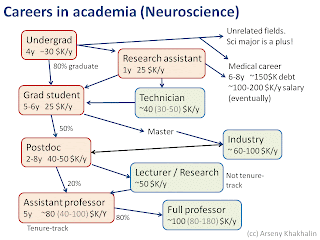One thing that I keep hearing is that the hippocampus is called that way because, if dissected from the brain, it kind of resembles a Seahorse fish (genus "Hippocampus"). This statement is made by Wikipedia, for example. But the thing is - it does not really resemble it!
I mean, you can pretend they have something in common, and under a certain angle the hippocampus is indeed kind of bent, but you need to try really hard in order to "see" a seahorse in this structure. That's why when people say that, they usually chuckle a bit, and make a comment that "the morphologists in the previous centuries did probably have some good imagination".
At the same time, if you find the hippocampus at the coronal section of human brain, then, together with adjacent subiculum and entorhinal area, it does really look seahorse-shaped!
The difference here is that while the whole structure can be "bent" in a shape of the seahorse fish, no sane person (in my opinion at least) would try to describe it in "seahorse shape" terms, if not really prompted to do so. It's an "embrio-like thingy", or anything on earth, but the fish shape is certainly not the first thing to come on mind. While the section, with this gentle curve, does definitely look like a seahorse, with a poach and everything.
So my proposal is: to stop pretending it's about the whole structure. It's about the section. The morphologists of the past were quite OK; they weren't hallucinating.
I mean, you can pretend they have something in common, and under a certain angle the hippocampus is indeed kind of bent, but you need to try really hard in order to "see" a seahorse in this structure. That's why when people say that, they usually chuckle a bit, and make a comment that "the morphologists in the previous centuries did probably have some good imagination".
At the same time, if you find the hippocampus at the coronal section of human brain, then, together with adjacent subiculum and entorhinal area, it does really look seahorse-shaped!
The difference here is that while the whole structure can be "bent" in a shape of the seahorse fish, no sane person (in my opinion at least) would try to describe it in "seahorse shape" terms, if not really prompted to do so. It's an "embrio-like thingy", or anything on earth, but the fish shape is certainly not the first thing to come on mind. While the section, with this gentle curve, does definitely look like a seahorse, with a poach and everything.
So my proposal is: to stop pretending it's about the whole structure. It's about the section. The morphologists of the past were quite OK; they weren't hallucinating.

